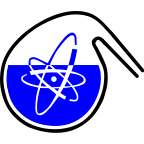Speaker
Description
Spent fuel is generated during power reactor operation in the form of spent fuel assemblies. Spent fuel assemblies are placed to at-reactor spent fuel pool for cooling, reducing of fission products radioactivity and radiation protection of staff. During storage of spent fuel assemblies radionuclides, both fission and activation origin, get to solution of spent fuel pool. Radionuclides, interacting with products of corrosion, can form radioactive soluble species and suspensions that fall to bottom of spent fuel pool or to hard-to-reach places. Radioactive sediments increase background radiation and staff doses, as well as problems at spent fuel pool decontamination during operation or decommissioning.
Existing treatment installations for spent fuel pool solutions manage with treatment process partially. More effective treatment methods and technologies for these solutions are required. Radionuclide speciation in solution of spent fuel pool is an important information that is necessary for solving this problem. The aim of this study is to establish speciation of major radionuclides in solution of spent fuel pool.
The retention of trace amounts of radionuclides (
The results of radionuclides retention on ultrafiltration membrane depending on solution pH value and solution composition were obtained during of the research. Predictably, boric acid is retained on this membrane slightly, within 5%. Retention of radionuclide
The speciation of all investigated radionuclides is similar (Fig. 1) in boric acid solution in weak acid pH region. Rather, equal speciation is explained by formation of pseudocolloid particles of radionuclides. As illustrated (Fig. 1), that speciation of radionuclides
The experiment has shown the possibility of
Figure 1

